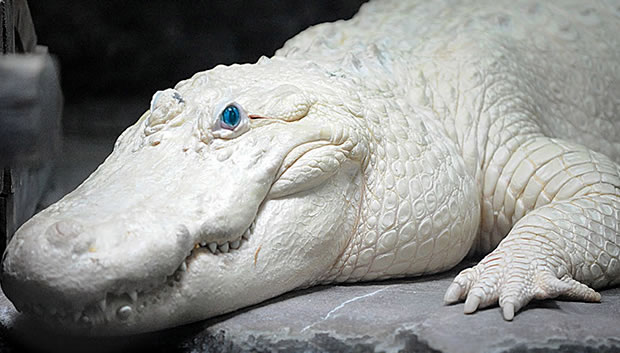

Mississippi Gopher Frog
Mark Bailey |
Creature Profile
The Mississippi gopher frog was once found in nine counties of parishes in Louisiana's lower coastal plain, east of the Mississippi River, to the Mobile River delta in Alabama. But it has not been seen in Louisiana since the late 1960s or in Alabama since the 1920s. Presently, it is only known to occur at one site in Harrison County, Mississippi. Adults are medium-sized and stocky and reach about three inches in length. Their colors range from black to brown or gray, and they are covered with dark spots and warts. Since gopher frogs are rare and very secretive, very little is known about their behavior. When handheld, they are known to put their hands in front of their faces, like a child shielding its eyes from a bright light. The call of the gopher frog is very deep and sounds similar to a human snoring or a motorcycle revving.
The natural habitat of gopher frogs is temperate forest and intermittent freshwater marshland. Much of their adult lives are spent underground in forests with an open canopy and abundant ground cover. They are mainly active at night and are known to use gopher tortoise burrows or abandoned burrows or holes of mammals as a retreat during the day. They are opportunistic feeders, and will feed on insects, invertebrates and even other frogs and toads. They prefer to breed in isolated ponds and will travel great distances to find suitable spots. Breeding occurs in February and March, and females lay hundreds of eggs. The tadpoles remain in the ponds for 90 to 12 days, and when they become froglets, they migrate to dry terrestrial habitats to mature.
The current Mississippi population is said to be less than 100. The main threat to the species is habitat loss. Also, gopher frogs depend on the underground
burrows of gopher tortoises, another threatened species. Also in 2003, a number of tadpoles were said to have died off due to a newly discovered disease in the
area. This species is protected by law, making it illegal to hunt, kill, collect, or injure it.
Wikipedia Article

|
Wikipedia Article Copyright Notice: This article is licensed under the GNU Free Documentation License. It uses material from the Wikipedia article "Gopher frog". |
May 9, 2017
Glenn, C. R. 2006. "Earth's Endangered Creatures - Gopher Frog Facts" (Online). Accessed 4/16/2024 at http://earthsendangered.com/profile.asp?sp=655&ID=9.
Need more Gopher Frog facts?




